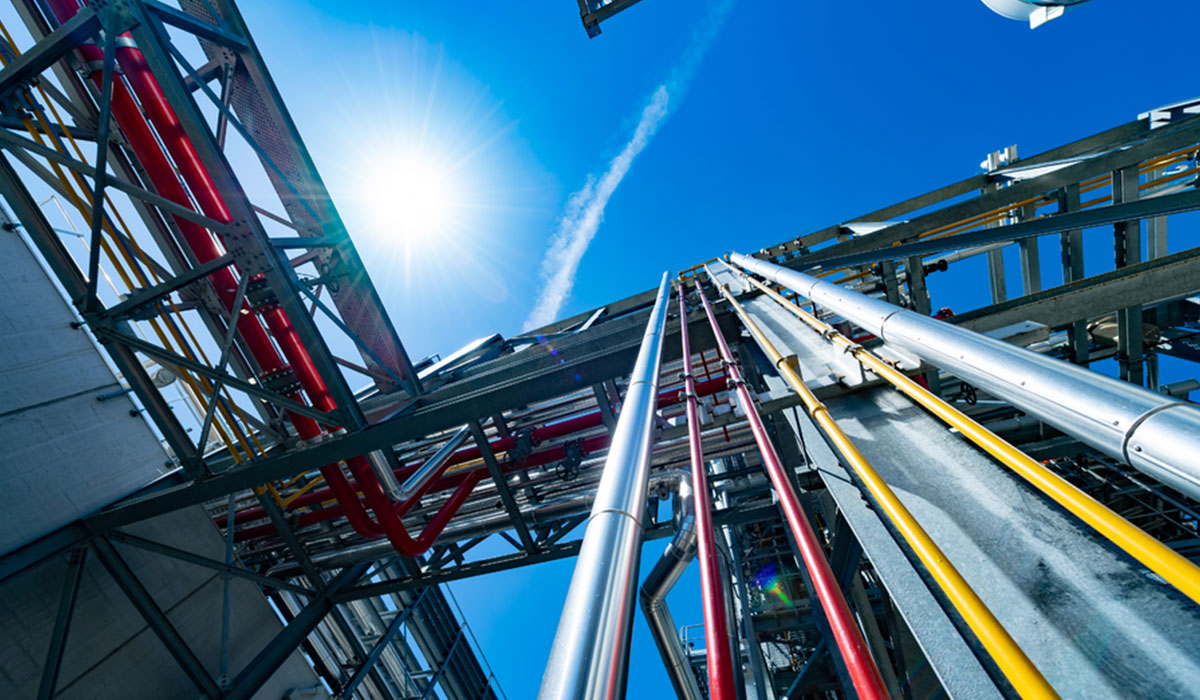


With GAYA, we have succeeded in designing a complete and flexible process chain for the production of biomethane capable of replacing natural gas in the future.
The GAYA Project is multifaceted. This is an R&D project bringing together 11 partners of excellence and coordinated by ENGIE. It was launched in 2010 with the financial support of ADEME and completed in 2021, with the aim of developing an innovative, competitive and sustainable sector to produce biomethane by pyrogasification of dry biomass (forest residues, agricultural residues, etc.). GAYA is also the name of the cutting-edge R&D platform built by ENGIE as part of this project. This unique semi-industrial scale platform has the advantage of providing a complete and integrated view of the entire biomethane production chain: biomass pretreatment, pyrogasification, purification of the syngas produced and methanation.
Overall, this processes chain consists in bringing the dry biomass to high temperature to allow, after conversion, to have a renewable gas substitutable for natural gas of fossil origin. This experimental site has thus made it possible to demonstrate the technical, economic and environmental feasibility of this sector.
Subsequently, ENGIE also took an interest in waste recovery, in line with the objectives set by the Energy Transition Law for Green Growth, which aims to reduce the quantities of buried waste by 50% by 2025 (as compared to 2010). The GAYA platform thus achieved a world first at the end of 2020 by producing low-carbon synthetic methane from the pyrogasification of Solid Recovered Fuels (SRF).
| The GAYA experimental platform in St Fons is based on the synergy of two entities: ENGIE Solutions, which operates the platform via a dedicated team in the control room and maintenance, and ENGIE Lab CRIGEN which, under the leadership of Marion MAHEUT, builds and conducts research programs to meet the Group's ambition to industrialize this chain of processes. Following the work carried out on the GAYA platform, ENGIE is planning the construction of a first industrial unit in Le Havre, the Salamandre project, from 2023 on. |
We want to show how a large-scale R&D project was able to transform and lead to its industrialization. How an idea that emerged from a blank page ended up reaching a high level of industrialization and maturity. In this sense, GAYA is a real success story. We have succeeded in designing a complete and flexible process chain for the production of biomethane capable of replacing natural gas in the future. The pyrogasification sector will not suffice alone, but will certainly be one of the sectors that will meet the need to decarbonize the gas.
Thus we will be able to testify that at ENGIE Research and Innovation we can be at the heart of the industrialization of new processes and in support of the commercial development of future industrial units like the Salamandre platform in Le Havre.
The methanation technology remains, in my opinion, GAYA's major innovation. This is the step that converts the molecules contained in the “syngas” (CO-CO2 and hydrogen) into methane. The operation of the GAYA platform during the project shows that this technological solution works, is robust, flexible in terms of input flow rate, in terms of input gas quality and makes it possible to achieve the rate maximum conversion to methane in a single step!
Originally, the experts started from the observation that the technologies available on the market had certain technical and economic drawbacks. The idea was then launched to develop a new technology based on an isothermal fluidized bed reactor, making it possible to control heat exchange. This is the key point of this conversion step because the quantity of methane produced depends directly on the ability to manage these heat exchanges in the methanation reactor. The reactor designed by Dr. Yilmaz KARA, senior key expert in gas production and treatment processes, was implemented on the GAYA platform and, with all the operating and research teams, we were able to demonstrate the proper functioning of this innovation which has generated various patents.
As a result, our reactor is now fully industrializable and thanks to its flexiblility, in terms of flow rate, quality and composition of the input gas, it could be installed behind any gasifier. We have also demonstrated that this reactor, since it works with CO2 and hydrogen, could also be adapted to the Power to gas sector. In both cases, the reactor makes it possible to produce synthetic methane which can be injected into the gas network or meet the challenges of green mobility, etc.
I would like us to be able to make visitors aware of the reality of green gas production sectors today, and furthermore in the current geopolitical context, about gas supply. With this R&D and then industrialization project for GAYA, we can prove that ENGIE is taking action to accelerate the transition to a carbon-neutral economy. Since we are at Viva Technology, which is the exhibition of the world of tomorrow and new technologies, it is important to show that at ENGIE, we are also moving to advance research and innovation.
The future will be carbon free. It's a necessity. However, there are still a lot of challenges to overcome to make this a reality.